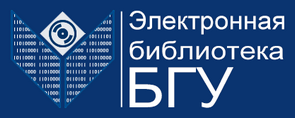Пожалуйста, используйте этот идентификатор, чтобы цитировать или ссылаться на этот документ:
https://elib.bsu.by/handle/123456789/318072| Заглавие документа: | Usage of hypercomplex numbers in a cryptographic key agreement protocol based on neural networks |
| Другое заглавие: | Использование гиперкомплексных чисел в протоколе согласования криптографических ключей на основе нейронных сетей / П. П. Урбанович, Н. П. Шутько |
| Авторы: | Urbanovich, P. P. Shutko, N. P. |
| Тема: | ЭБ БГУ::ОБЩЕСТВЕННЫЕ НАУКИ::Информатика |
| Дата публикации: | 2024 |
| Издатель: | Минск : БГУ |
| Библиографическое описание источника: | Журнал Белорусского государственного университета. Математика. Информатика = Journal of the Belarusian State University. Mathematics and Informatics. – 2024. – № 2. – С. 81-92 |
| Аннотация: | We analyse the features of the structural and functional organisation of two interacting neural networks based on the known architecture in the form of a tree parity machine (TPM) using algebras of real and hypercomplex numbers. Such machines are used as an alternative to the Diffie – Hellman algorithm to generate a shared secret cryptographic keybetween two parties. The main elements of mathematical models of TPMs, operating on the basis of the listed algebras, are considered. The features of the software implementation of a system simulator based on interacting TРMs are described, and the results of using the developed tool for analysing the dynamics of processes in the system under consideration are presented. Mutual learning and data exchange of two TРMs are realised based on the transmission control and Internet protocols (TCP/IP). The synchronisation state of the networks is determined by the equality of the hashes that each party calculates based on the secure hash algorithm. A hash size of 512 bits are generated by transforming the string representation of the current input vector of neuron weights. The effectiveness of possible attempts by a third party to synchronise with two legitimate TPMs operating on the basis of algebras of hypercomplex numbers is assessed. |
| Аннотация (на другом языке): | Проанализированы особенности структурной и функциональной организации двух взаимодействующих нейронных сетей на основе известной архитектуры в виде древовидной машины четности (ДМЧ) при использовании алгебр действительных и гиперкомплексных чисел. Такие машины применяются как альтернатива алгоритму Диффи – Хеллмана для генерации двумя абонентами общего тайного криптографического ключа. Рассмотрены основные элементы математических моделей ДМЧ, функционирующих на базе перечисленных алгебр. Описаны особенности программной реализации симулятора системы на основе взаимодействующих ДМЧ, а также представлены результаты использования разработанного инструментального средства для анализа динамики процессов в рассматриваемой системе. Взаимное обучение и обмен данными выполнены для двух ДМЧ на основе протокола управления передачей данных и межсетевого протокола (ТСР/IP). Наступление состояния синхронизации сетей определяется равенством хешей, которые каждая из сторон вычисляет на базе алгоритма безопасного хеширования. Хеши размером 512 бит генерируются преобразованием строкового представления текущего входного вектора весов нейронов. Приведена оценка устойчивости процесса синхронизации ДМЧ к геометрическим атакам третьей стороны. |
| Доп. сведения: | The authors express their gratitude to the director of the Institute of Mathematics, Computer Science and Landscape Design of the John Paul II Catholic University of Lublin doctor of science M. Plonkowski for the help and information provided, which contributed to the improvement of the article content. = Авторы выражают благодарность директору Института математики, информатики и ландшафтного дизайна Люблинского католического университета имени Иоанна Павла II доктору наук М. Плонковскому за предоставленную им информацию, которая позволила улучшить содержание статьи. |
| URI документа: | https://elib.bsu.by/handle/123456789/318072 |
| ISSN: | 2520-6508 |
| Лицензия: | info:eu-repo/semantics/openAccess |
| Располагается в коллекциях: | 2024, №2 |
Все документы в Электронной библиотеке защищены авторским правом, все права сохранены.

